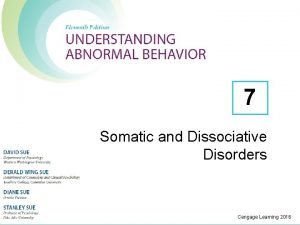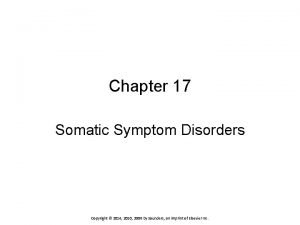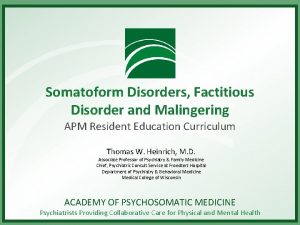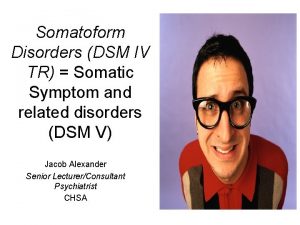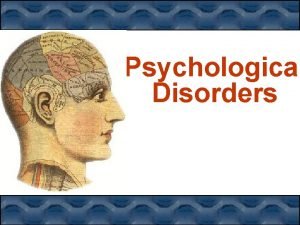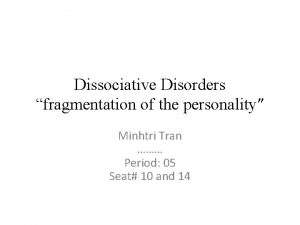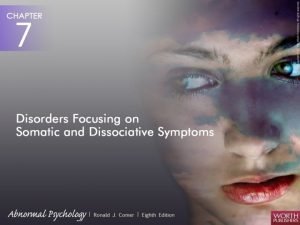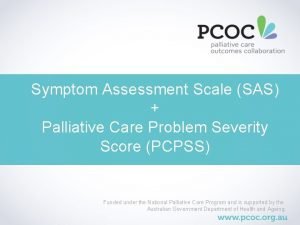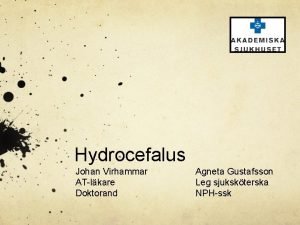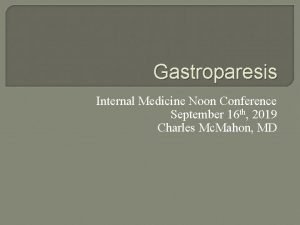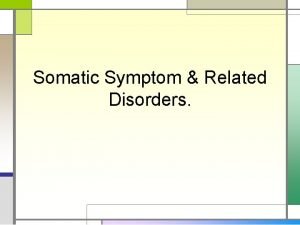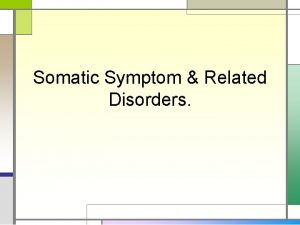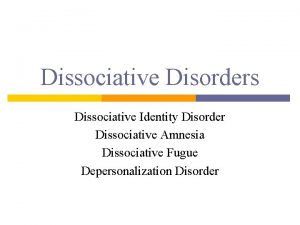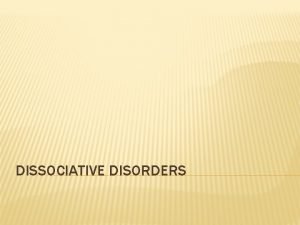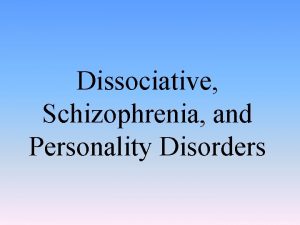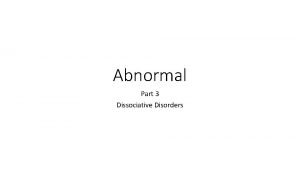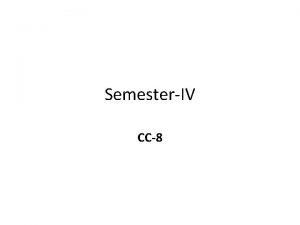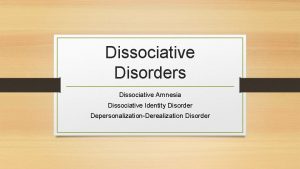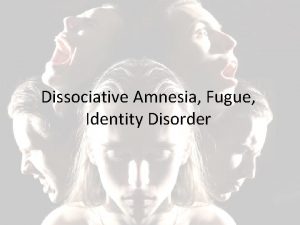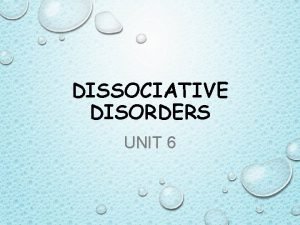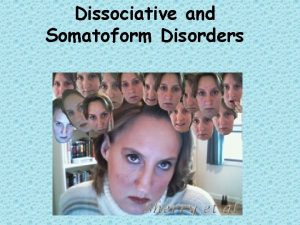Module 6 Dissociative Disorders Module 8 Somatic Symptom














- Slides: 14

Module 6 Dissociative Disorders & Module 8 Somatic Symptom and Related Disorders

The Nature of Dissociation Normally integrated elements of consciousness, memory, and personal identity become splintered May impair memory of important personal experiences Potential identity confusion Feeling that surroundings or objects are not real Emotional detachment Types of Dissociative Disorders Dissociative Identity Disorder (DID) Dissociative Amnesia Depersonalization/Derealization Disorder

Dissociative Identity Disorder (DID) Formerly known as multiple personality disorder or dual personality Shattering of a unified identity into at least two separate but coexisting personalities with different memories, behaviors, patterns, and emotions ◦ Subpersonalities – Internal; Different identities or personalities ◦ Primary – dominant identity; often has the person’s given name Controversial diagnosis More common in women than men

Dissociative Amnesia Sudden loss of memory for personally important information (not caused by a medical condition or other mental disorder) Forms of memory loss Localized amnesia: for a distinct period of time Selective amnesia: for some of the events surrounding a trauma Generalized amnesia: Total loss of memory for a person’s entire life or identity Continuous amnesia: for events from a particular time or trauma up to the present Systemized amnesia: for certain classes of information With dissociative fugue: Individuals travel to a new location without remembering their pre-fugue life

Depersonalization/Derealization Disorder Marked by episodes of depersonalization, derealization, or both Depersonalization ◦ Detachment from oneself Derealization ◦ Detachment from one’s environment Symptom clusters ◦ ◦ Anomalous (strange) body experiences Emotional numbing Anomalous subjective recall Alienation from surroundings

Causes of Dissociative Disorders Post-traumatic Model - Links severe childhood abuse to DID Sociocognitive Model - Enactment of multiple identities usually serves specific personal goals Fantasy Model - Suggestibility, fantasy proneness, and absorption are related to dissociative experiences Integrative View - Research suggests that childhood trauma and sociocultural influences – including iatrogenic factors all contribute to DID Biological Causes - 48% to 59% of the variance accounted for in dissociation is attributable to genetics Psychological Causes - Attributions, appraisals, and increased attention to stimuli play important roles in the development and maintenance of dissociative disorders

Treatment of Dissociative Disorders Treatment of DID Long-term diagnosis of DID is not favorable Therapy can be challenging due to difficulty with interpersonal trust and concerns about rejection Goal: achieve fusion—alters moving into their host personality Stimulants, antidepressants, anticonvulsants 3 phases of psychotherapy: 1. Establishing a therapeutic relationship 2. Exploring trauma narratives and resolving emotions 3. Integrating identities, reducing reliance on dissociation for coping

Somatic Symptom and Related Disorders Somatic Symptom Disorder Illness Anxiety Disorder Conversion Disorder (Functional Neurological Symptom Disorder) Factitious Disorder Psychological Factors Affecting Other Medical Conditions

The DSM-5 in Simple Language: Diagnosing Somatic Symptom Disorder

The DSM-5 in Simple Language: Diagnosing Illness Anxiety Disorder © 2016 Academic Media Solutions

The DSM-5 in Simple Language: Diagnosing Conversion Disorder

The DSM-5 in Simple Language: Diagnosing Factitious Disorder

Warning Signs of Factitious Disorder by Proxy (Munchausen’s Syndrome by Proxy)

The DSM-5 in Simple Language: Diagnosing Psychological Factors Affecting Other Medical Conditions
 Types of somatic disorder
Types of somatic disorder Cengage
Cengage Chapter 17 somatic symptom disorders
Chapter 17 somatic symptom disorders Vindicate mnemonic
Vindicate mnemonic Somatic symptoms
Somatic symptoms Somatic vs factitious
Somatic vs factitious Nursing care plan for somatoform disorder
Nursing care plan for somatoform disorder Types of dissociative disorders
Types of dissociative disorders Disassociative fugue
Disassociative fugue Dissociative disorders
Dissociative disorders Palliative care problem severity score
Palliative care problem severity score Ventrikelvidd
Ventrikelvidd Bullerskada
Bullerskada Pregnancy or period
Pregnancy or period Gastroparesis cardinal symptom index calculator
Gastroparesis cardinal symptom index calculator

